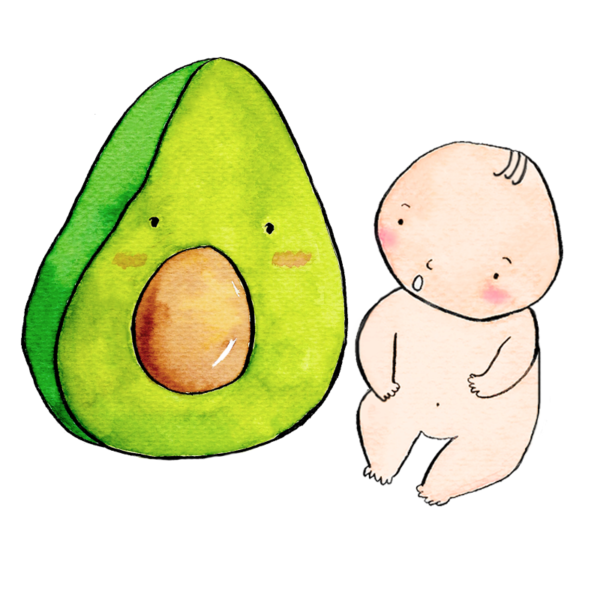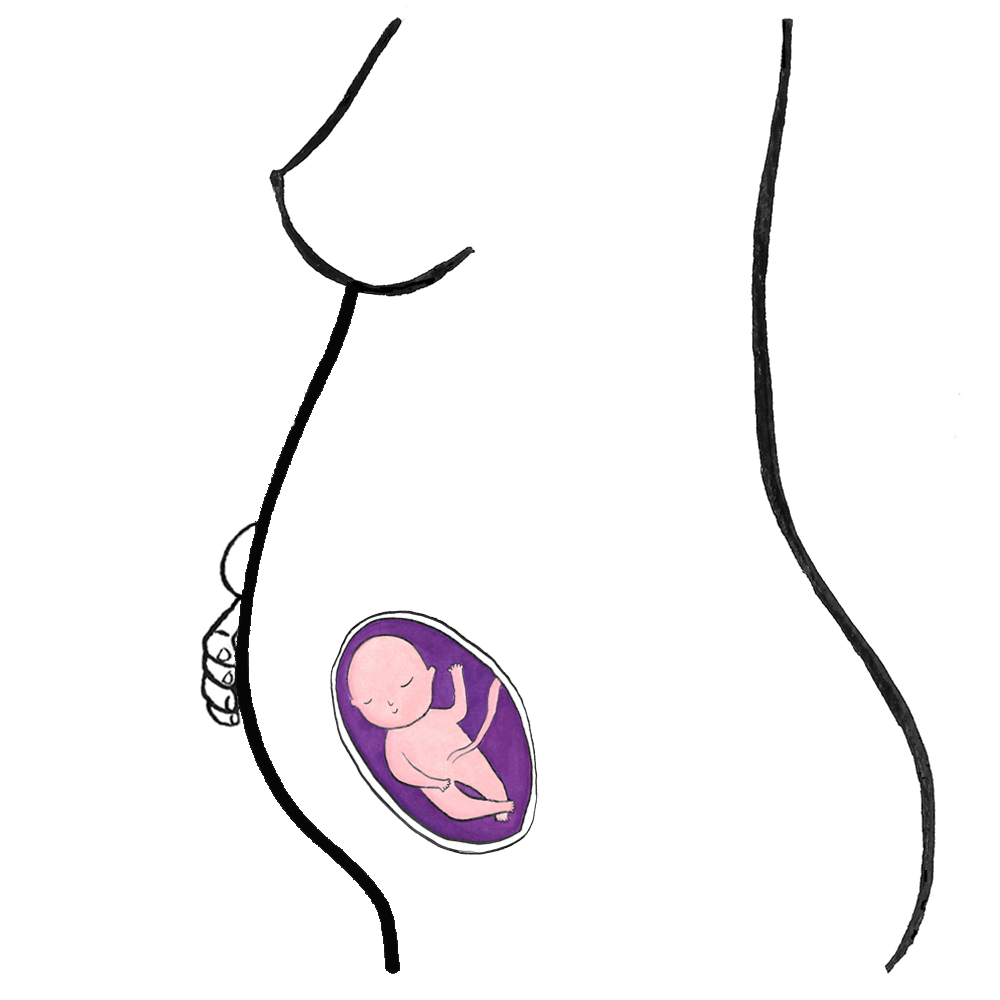19 weeks pregnant
Weekly update

Your Child develops a creamy coating, which will help during natural delivery and has benefits in the first hours after birth.
You may experience leg cramps and dark patches of skin on your face.
Your Child’s development
Your little one is now about 15 cm long, the size of an avocado, and weighs about 240g.
The protective coating: Your Child’s skin starts getting coated, from head to toe, with a white creamy substance known as vernix caseosa. Vernix helps to moisturize Your Child’s skin while in the womb, protecting it from the amniotic fluid, and it also eases the journey down the birth canal during delivery – serving as a natural lubricant.
Even after birth, vernix coating can continue to protect your baby’s skin by helping it retain moisture and stave off bacterial infections. This is why it’s not recommended to instantly bath a baby after birth, and the World Health Organization (WHO) recommends waiting for at least six hours.
The arms and legs: Your Child looks ever more human, as arms and legs are now in proportion with the rest of the body.
More connections: Neurons make more connections with the muscles, allowing Your Child to gain greater control of the arms and legs.

Your development
The increase in weight may lead to stretch marks on your legs and belly, and you might experience more back pain and other symptoms.
Melasma: You may start noticing darkened skin patches on your face or elsewhere, known as melasma or “the mask of pregnancy”. Usually, the patches aren’t of any concern for your or Your Child’s health and naturally fade after giving birth.
Leg cramps: Leg cramps are common as pregnancy progresses, often striking at night. To prevent cramps, stretch your calf muscles before bed, stay active, and drink plenty of fluids. If a leg cramp strikes, stretch the calf muscle on the affected side. A hot shower, warm bath, or ice massage can help as well.
What to do now
To relieve the pressure effects and reduce back or hip pain, try to sleep on your side and put a pillow between your knees.
Treating melasma: If you want to treat melasma for cosmetic reasons, verify the safety of any possible treatment with a dermatologist, pharmacist, or your doctor. Note that many creams or pills that are advertised for reducing the patches are, at best, ineffective — and, at worst, unsafe.
Learn about the newborn birth protocol: Bathing a child immediately after birth used to be a common procedure. But more and more hospitals are changing that practice, recognizing the health benefits of vernix, the white coating that often still covers the child after birth. You may want to check with your hospital to know the newborn birth protocol they follow and whether they support delayed bathing and an undisturbed first hour.
Verified:
Dr. Wanwadee Sapmee Panyakat (OB-GYN), license no. 41208 (20 October 2020)



